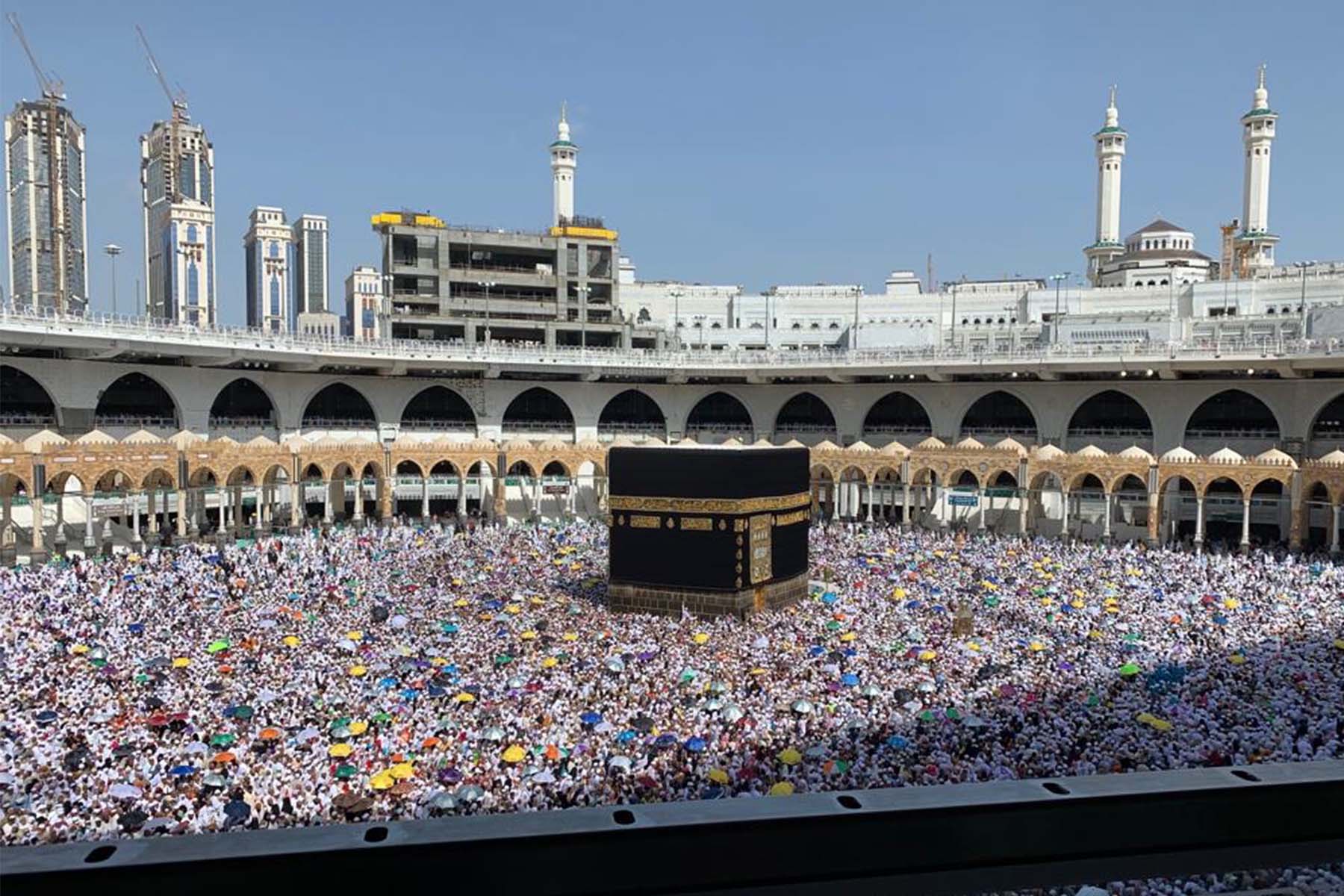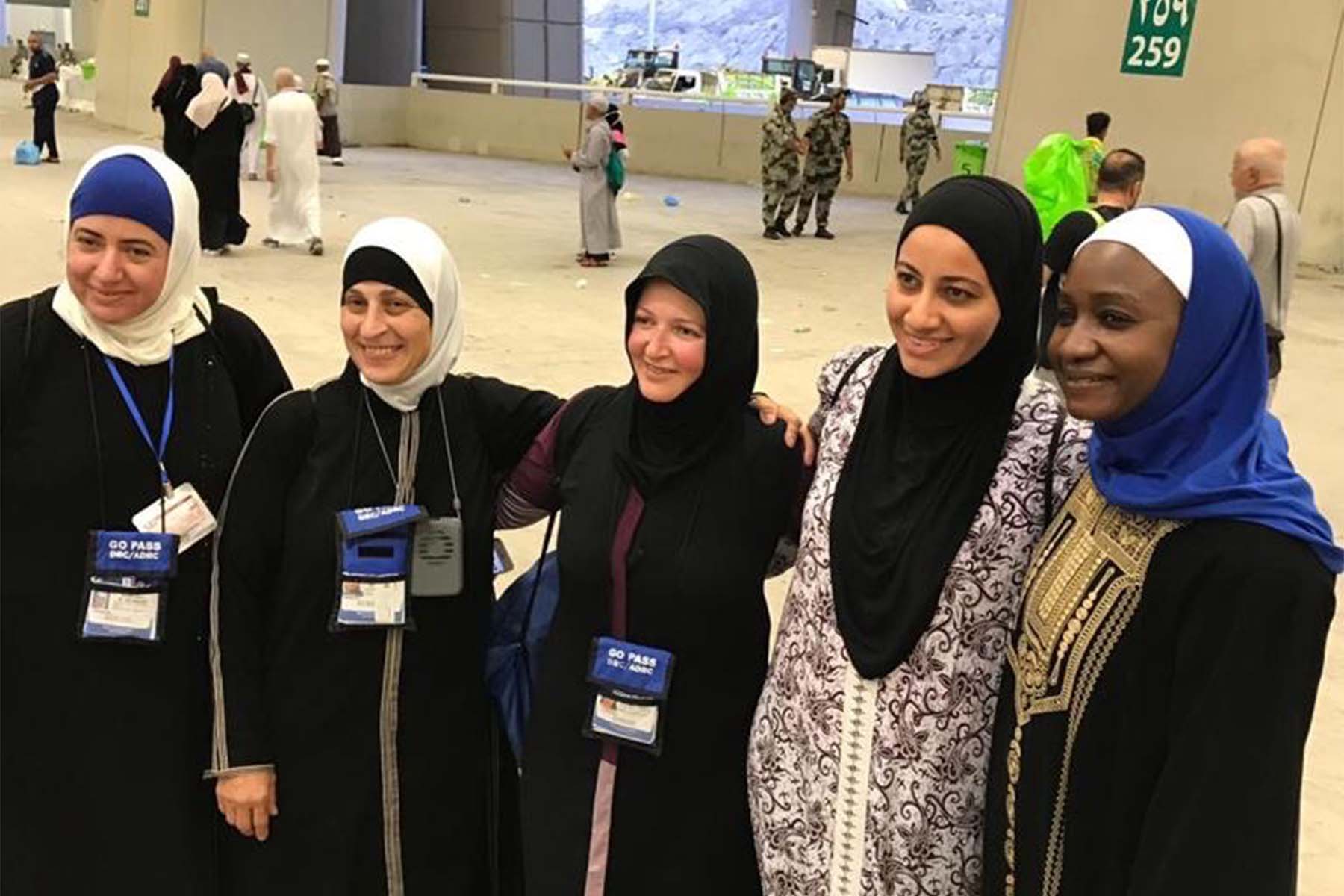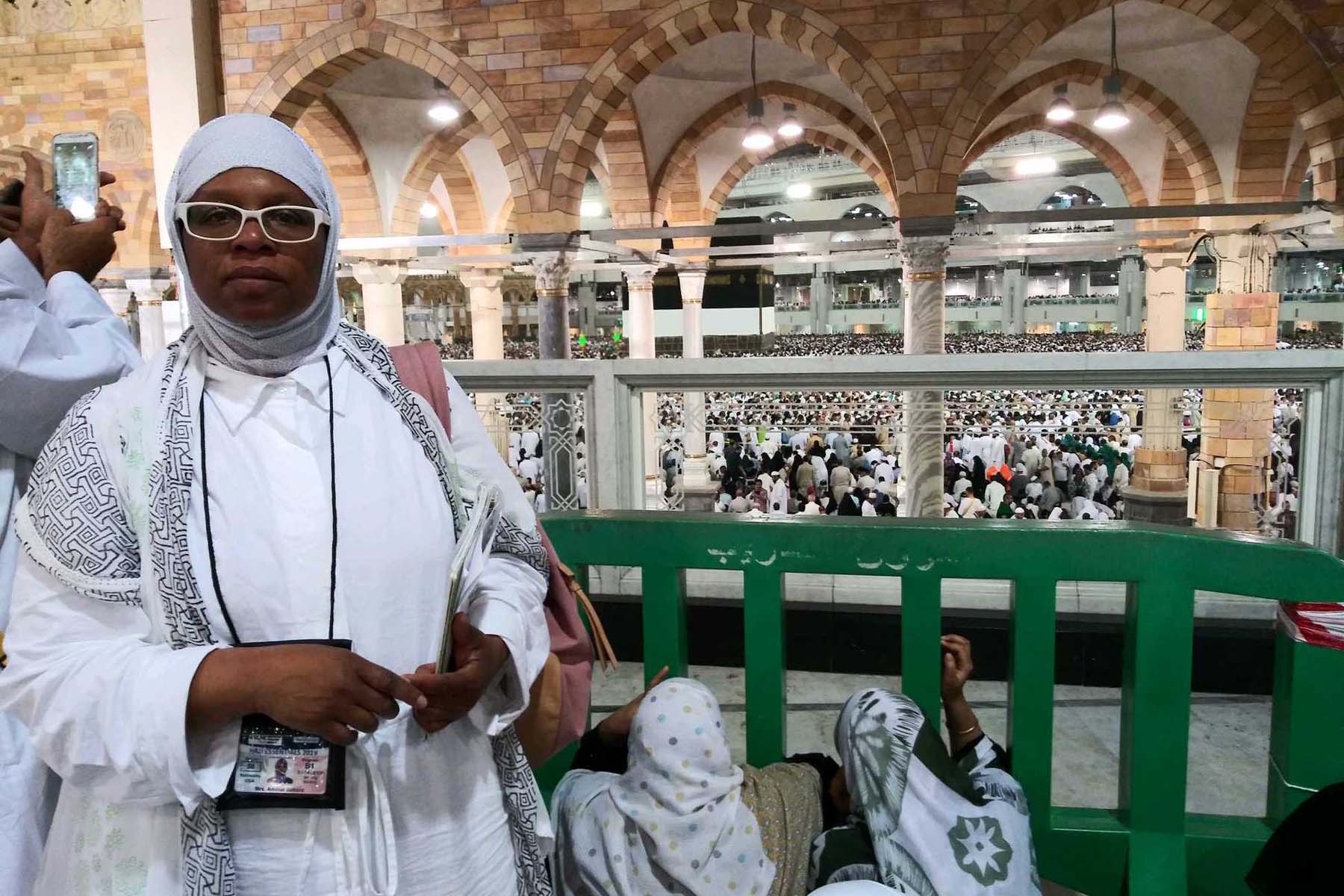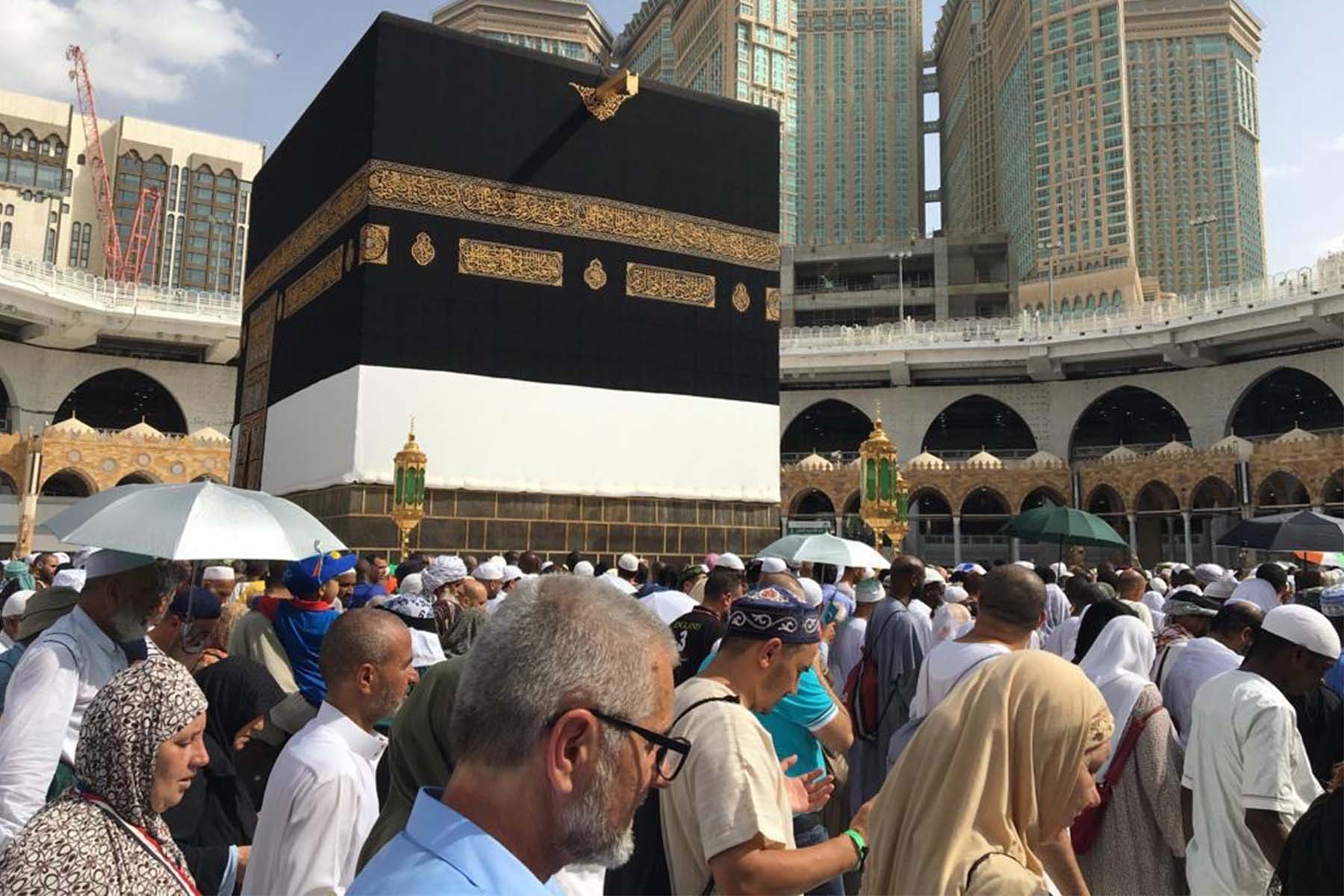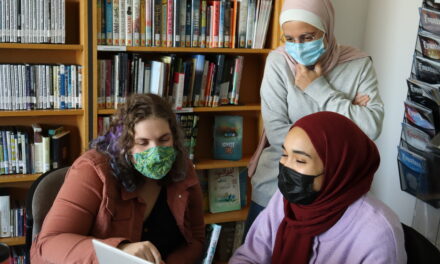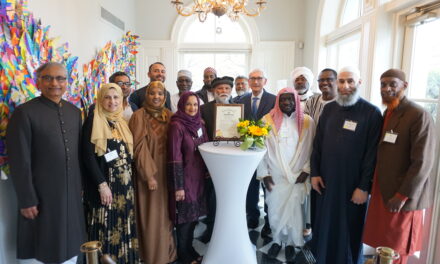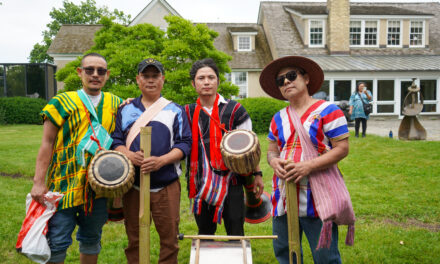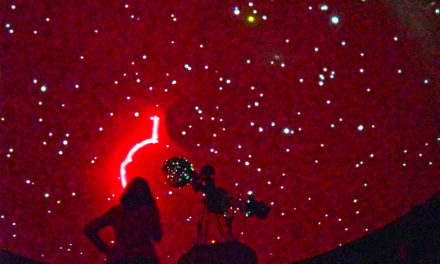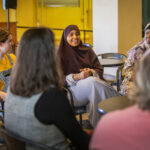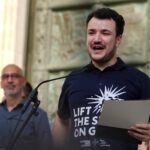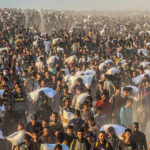© Photo
Courtesy of Fautoumata Ceesay and Aminat Bakare
This year, 2 million of the world’s 1.8 billion Muslims made the hajj to sacred sites in Saudi Arabia. The hajj is one of the Five Pillars of Islam, and every Muslim who is physically and financially able is required to go on the pilgrimage at least once in their lifetime. But for those in the Milwaukee area who were able to make the 2019 hajj, which began on the evening of Friday, August 9 and ended on the evening of Wednesday, August 14, the experience was far more than the fulfillment of an obligation.
“It was humbling,” said Dr. Fatoumata Ceesay, who attended the hajj this year with a group from Milwaukee led by Imad Sarsour. “When you make it to Mecca to do the pilgrimage, it doesn’t feel like an obligation, it feels like a privilege.” Many Muslims are able-bodied and have the necessary means to attend, she said, but without “the invitation from Allah, you may not be able to do it – it’s a common sentiment among Muslims. So when you are standing there, it is special.”
However, the sheer number of people in attendance can be daunting. “It is quite an experience to see that many people in the same place at the same time trying to do the same thing,” said Dr. Ceesay. “You are dealing with a lot of people from all parts of the world. You have to come armed with tons of patience.”
Fortunately, the Saudi Arabians are experienced hosts. “The Saudi people did a really good job,” said Dr. Iftekhar Khan, President of the Islamic Society of Milwaukee. Dr Khan has attended the hajj every year since 2015 and praised the Saudis for their efficiency in managing the traffic flow on the highways and at the airport. Pilgrims surrender their passports upon arriving in Saudi Arabia, “and on the way back we pick up our passports, and they did not lose anything,” Dr. Khan said.
Being surrounded by such a vast crowd can be stressful, but the Saudis take care not to cause the pilgrims unnecessary suffering. “The accommodations were very good,” Dr. Khan said. “The food was like a king’s feast every day.”
By attending to every detail, the host country allows pilgrims to focus on the spiritual meaning of hajj. Mecca “smells good. It is extremely clean, [and] there are water fountains everywhere,” Dr. Ceesay said. And though the air temperature was over 100 degrees, “fans and air conditioning [are] constantly going” and the Saudis deploy “cold mists to try to cool people down.”
Though he did not attend in 2019, Dr. Zulfiqar Shah, the religious director of ISM, has travelled to Mecca for hajj 16 or 17 times, he said, sometimes bringing groups and also making the pilgrimage at “other times when I went in my individual capacity.”
Dr. Shah said that making the hajj “is the most spiritual experience one can ever imagine. Mecca, which we face five times daily, the place we call the holy sanctuary, is the most sacred place on the face of the earth.”
A group of women from Milwaukee, Palestine and Chicago after the last Jamarat throw. (Courtesy of Fatoumata Ceesay)
When pilgrims arrive in Mecca, they change into ihram, which consists of modest clothing and a head covering for women. Men are dressed in what Dr. Shah called “two pieces of white cotton,” generally leaving one shoulder bare. Everyone is dressed in the same clothing, Dr. Shah said, so that there is “no token of status or position. The person from the street and the kings and the presidents of countries, all of them are dressed in the same modest dress, and all of them are doing the same rituals, glorying in the oneness of God and the unity of humanity.”
The Kaaba, a granite, cube-shaped structure surrounded by the Grand Mosque in Mecca, was originally constructed at the site by the Prophet Ibrahim (Abraham) and his son Ismail (Ishmael). “And since then,” Dr. Shah said, “the prophets, all the righteous people, have visited this place. This place is called the house of God. So facing the Kaaba, which is the symbol of Muslim unity, a landmark of past, present, and future . . . the sense of nothingness, creatureliness absorbs a person.”
Ibrahim and Ismail, Dr. Shah said, “were building a universal focal point . . . so that people from all around the world can unite themselves around [it] and worship one God.”
The original Kaaba, a simple structure without a roof, was rebuilt in around 608 by the Quraysh tribe, who then controlled Mecca. At the time, the Kaaba housed pagan idols as well as the Black Stone, believed to have been given to Ibrahim by the angel Gabriel. Others believe it was a meteorite from that time, while not religiously significant, pilgrims often try to touch it or kiss it as the only remnant of the original structure from the time of Abraham and much later, Prophet Muhammad. In 630 C.E., when Muhammad conquered Mecca, he ordered the Kaaba cleansed and rededicated to Allah.
The Kaaba itself, Dr. Shah said, “is nothing but bricks, but it symbolizes the oneness of God, the unity of creation, and also the spiritual nature of humanity.” It was the first structure that was built and dedicated as a place of prayer to God.
Many consider the visit to Mt. Arafat, where Muhammad preached his last sermon three months before his death in 632 C.E., to be the most important event of the hajj. This gathering on the desert plain around the small granite mountain is a time when pilgrims seek repentance, remember their own mortality and reaffirm their role on earth to be agents of good. Pilgrims “stand and pray and ask the Lord whatever they want with the hope that it will be granted,” Dr. Khan said.
In 2019, pilgrims at Mt. Arafat during the hajj received a spiritual surprise. “There was pouring rain at times, which never happens in Saudi Arabia,” Dr. Khan said. “If it rains like that, it is a blessing from the Almighty.”
Aminat Bakare, who traveled to Mecca with Shaykh Noman Hussain’s group from ISM West, was at the Mina Camp on theDay of Arafat when “it started to rain, and so many people were out in the rain with their hands raised making dua (prayer) to Allah . . . It was like the heavens opened up and your heart and soul opened up at that same time.”
